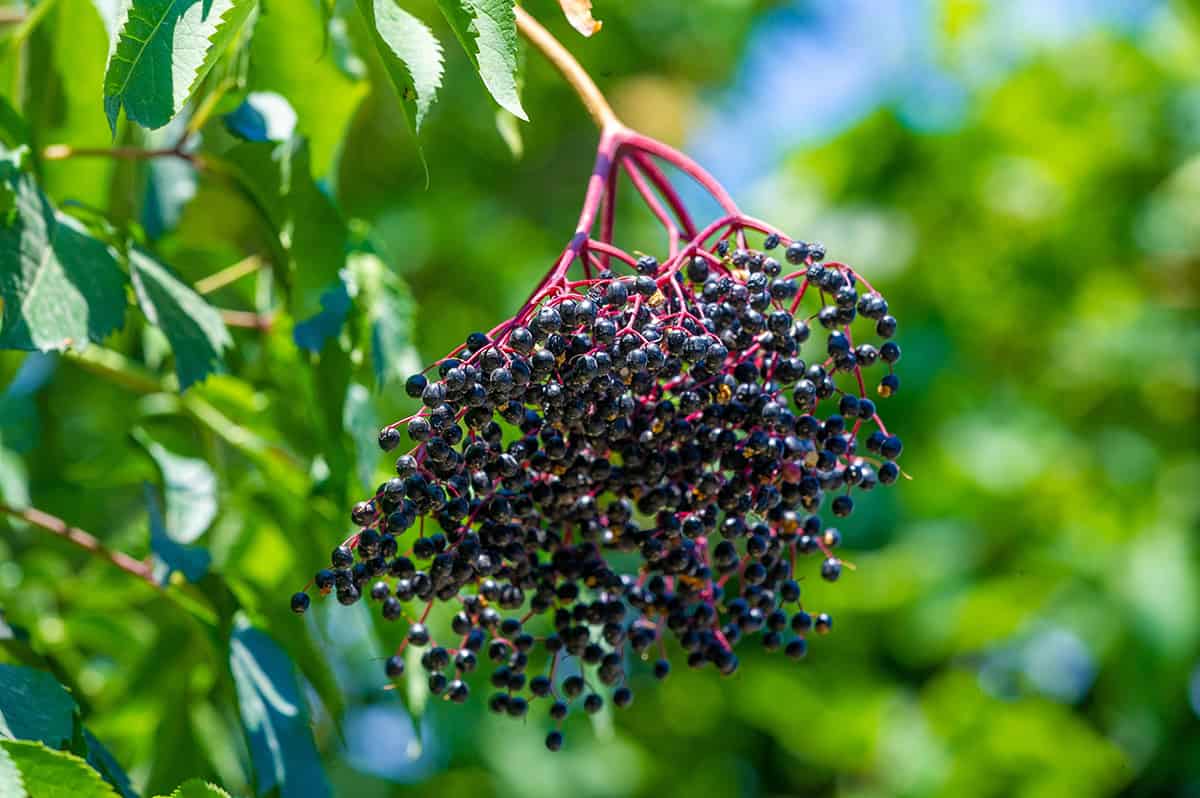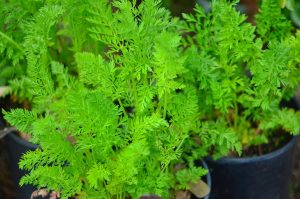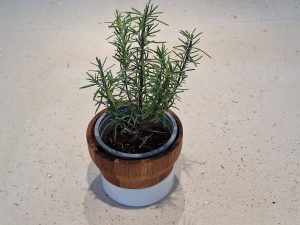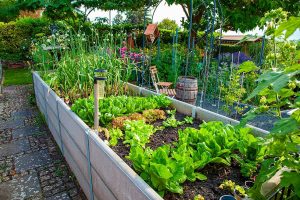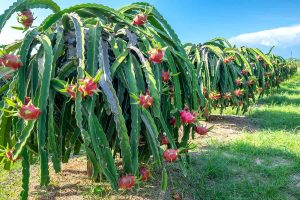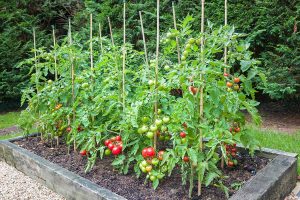From their clusters of creamy flowers to their rich, dark berries, elderberries are a gardener’s delight. The key is knowing which varieties to grow. Read on to learn about the most common elderberry options.
Table of Contents
Why Growing Elderberries?
If you’re after a hardy fruit shrub, elderberries are a solid bet. They handle a lot—different regions, tough soils, even a bit of neglect.
The fruit ripens in late summer, perfect for jams, jellies, syrup, pie, or wine. Fresh berries don’t last long, but dry or cook them and you’ll have elderberry treats for months.
Elderberries grow fast. They spread, fill in, and hit their stride in just a few seasons. The spring flowers—big, creamy clusters—bring in pollinators, too.
You won’t need to fertilize much. They’re usually lush and healthy with basic care. Prune in late winter or early spring if you want to keep them in check or encourage new growth.
Plenty of folks grow elderberries for their looks alone. Those dark berries and big leaves are hard to miss along a border. Deer don’t seem to care for them much, either.
They’re good for wildlife, too. Birds and insects use the flowers and fruit, so you’re adding some biodiversity to your space.
American Elderberry Varieties
American elderberries are tough, productive, and offer a lot of choices for home gardens or small orchards.
Adams
‘Adams’ is everywhere for a reason. It’s an old New York variety known for heavy yields and flexibility. You get big clusters of dark purple berries in late summer.
The shrub grows upright, topping out at about 8 to 10 feet. The berries are great for juice, wine, syrup, and preserves. There’s ‘Adams 1’ and ‘Adams 2’—they’re nearly twins in terms of fruit and productivity. Bloom time is mid to late season.
Disease resistance is pretty solid, though borers pop up now and then. It’s not picky about soil but does love rich, moist ground and sun. Planting it with other varieties helps with pollination and yield.
York
‘York’ is a go-to for big berries and heavy crops. Bred in New York, it produces some of the largest fruits among American elderberries, and they ripen a bit earlier than most.
The plant is more compact, usually around 6 feet tall, so it’s easier to manage. Berry clusters are hefty, which is handy for processing.
If you want something that ripens early and handles a range of conditions, ‘York’ is a safe choice. People often pair it with ‘Adams’ for better pollination. Flowering and fruiting are right in line with mid-season types.
Johns
‘Johns’ is known for strong, upright growth and fat, juicy berries. It started as a wild find, picked for its improved fruit size. The berries are deep purple-black and ripen mid-season.
The shrub can reach up to 10 feet. ‘Johns’ blooms a little earlier than some others. The fruit works well for jams, syrups, and, after cooking, even fresh eating.
Growers often use ‘Johns’ as a pollinator. Its sturdy canes resist breaking, but pruning helps with yield. Disease isn’t much of an issue if you give it space and sunlight.
Nova
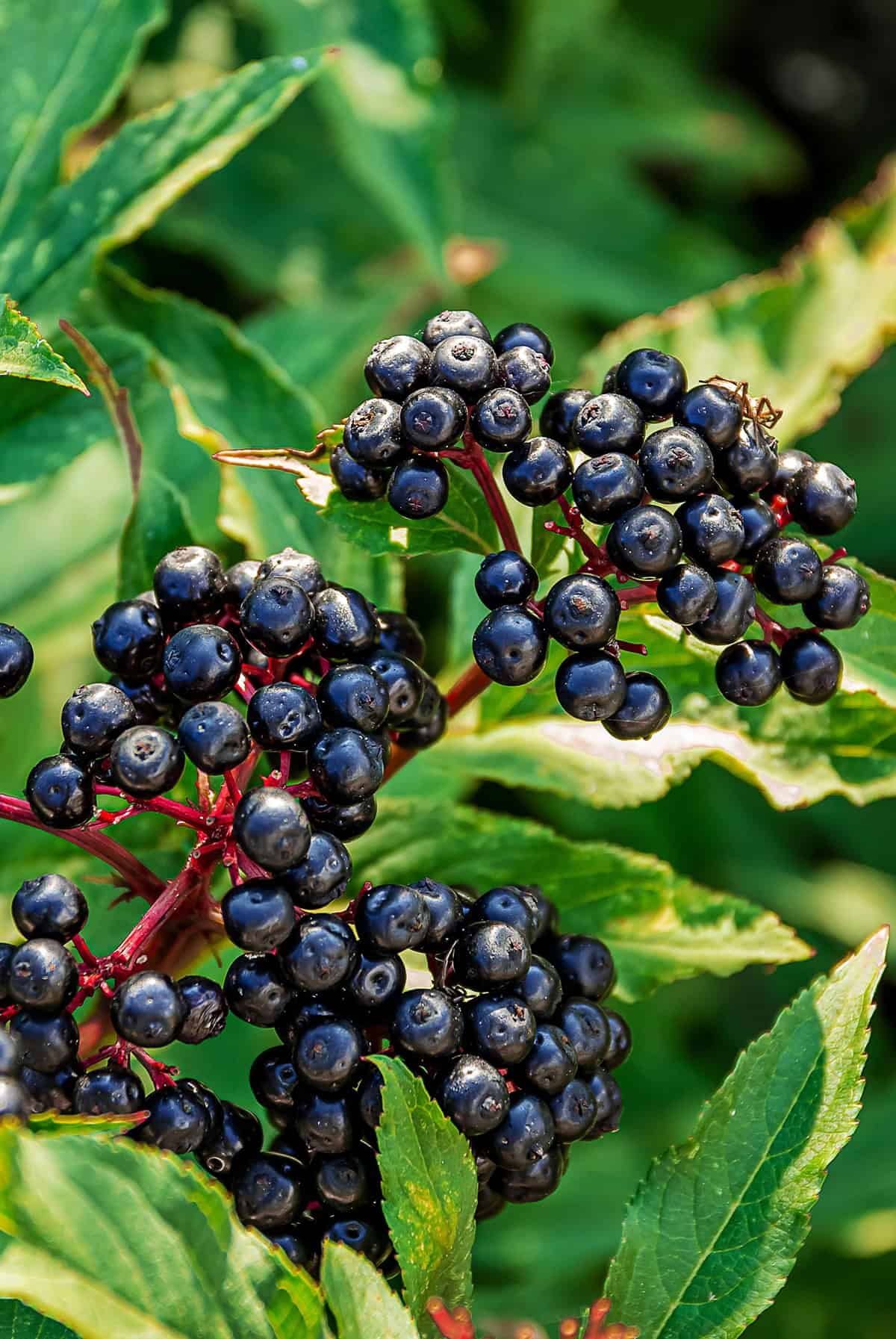
For smaller gardens, ‘Nova’ is a handy pick. It stays compact, about 6 feet tall and wide, and sets large, sweet berries—great for jams, jellies, and wine.
It’s reasonably productive and blooms mid-season. Pairing with ‘York’ is common for better cross-pollination. They match well in both growth and fruiting time.
Full sun and moist, well-drained soil are best. The berries have few seeds, which is nice for cooking. Disease resistance holds up, though aphids and borers might show up some years.
Bob Gordon
In the Midwest, ‘Bob Gordon’ is tough to beat for yield and adaptability. It’s from Missouri and handles hot summers and unpredictable soils.
The berries hang down, which actually helps protect them from birds. They’re black, juicy, and perfect for juice or preserves. Plants grow up to 8 feet and stay upright.
Late bloom and fruit set are handy for dodging spring frosts. These plants shrug off most diseases and bounce back from pests. Cross-pollination with other American types boosts the harvest.
Wyldewood
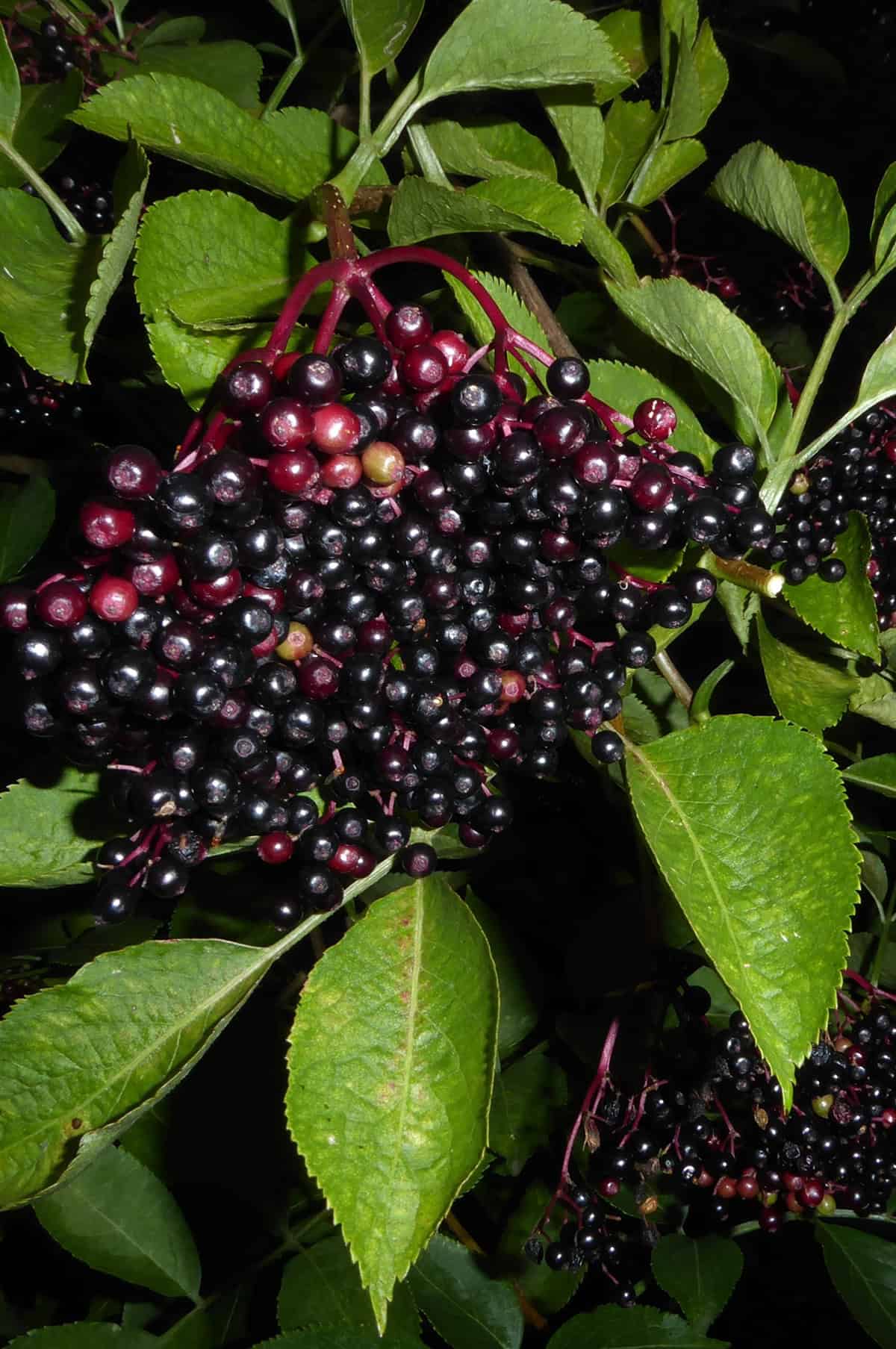
‘Wyldewood’ is a favorite for steady production, whether you’re in a backyard or running a small operation. It came out of Oklahoma, grows 8 to 10 feet tall, and has sturdy, upright canes.
This one sets big, uniform berry clusters that ripen later than most. Berries are dark and flavorful—good for any elderberry recipe. The late bloom helps avoid frost damage.
Give it full sun and it’ll even handle some drought once settled in. Disease resistance is high. Pairing with ‘Bob Gordon’ tends to improve both fruit set and size.
Ranch
‘Ranch’ is a good fit if you want low-maintenance. It’s shorter, usually 5 to 6 feet, with thick, sturdy stems that don’t flop even when loaded with fruit. The berries are smaller but ripen evenly, making picking a breeze. Early blooming is a plus if you want fruit sooner.
This variety handles tough soils and rarely gets sick. Its bushy habit can turn into a dense thicket, so a little thinning each year helps keep it healthy.
Scotia
‘Scotia’ hails from Nova Scotia and stands up to cold. It’s popular in northern U.S. and Canada, growing to about 6 to 8 feet.
Berries are medium-sized, juicy, and a bit sweeter than most—black to deep purple. Harvest is mid-season, and the fruit is great for jelly and syrup.
If you deal with harsh winters, ‘Scotia’ handles it. Combine with other varieties for a better crop. It likes moist, well-drained soil but isn’t too fussy.
Kent
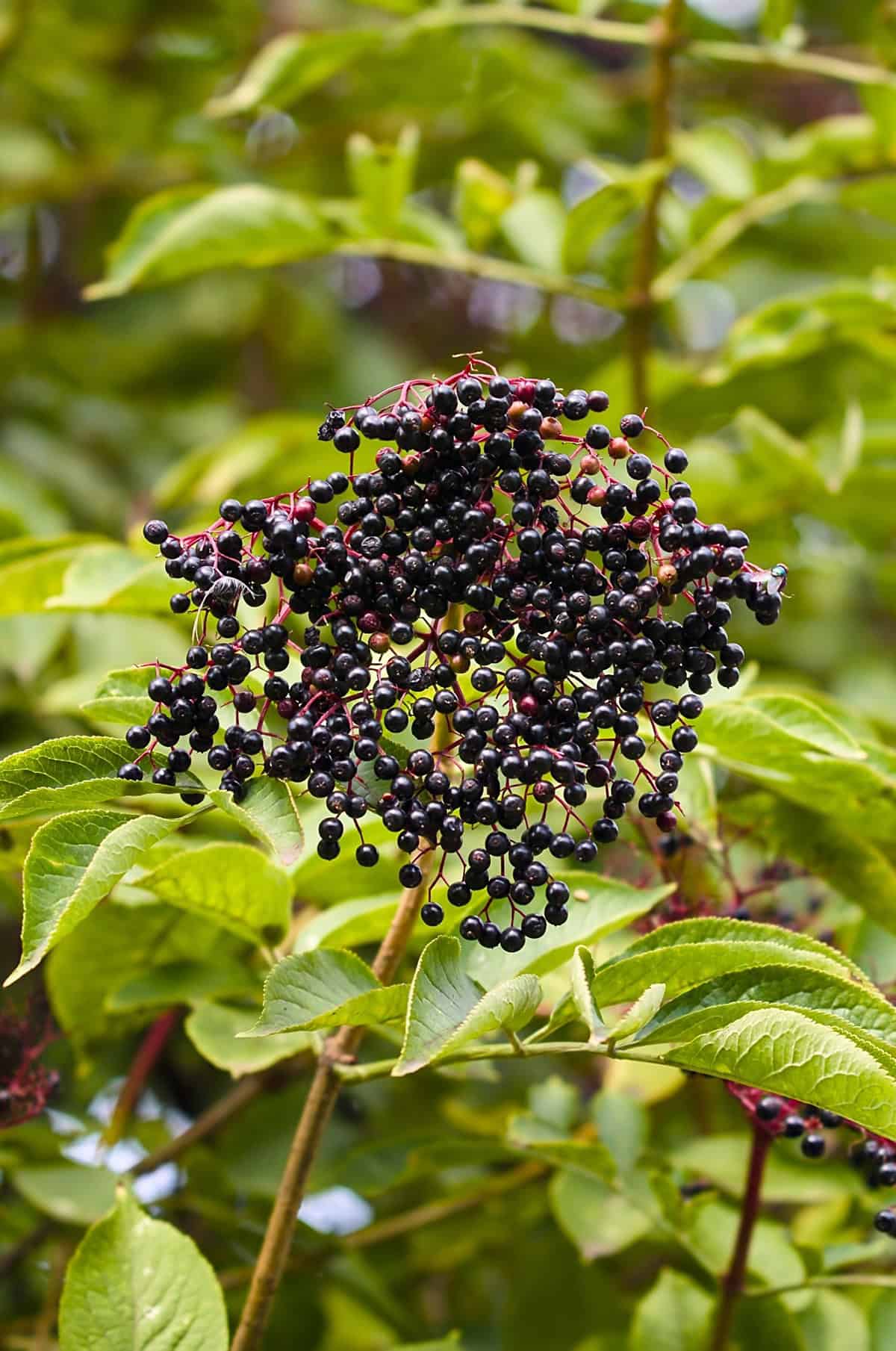
Another Canadian, ‘Kent’ is cold-hardy and upright, hitting 6 to 8 feet. It matures early and gives you generous berry clusters.
The fruit is flavorful and colorful, good for winemaking or cooking. Even ripening means you can pick most of it at once. Disease resistance is impressive.
Prefers sun but tolerates a bit of shade. Keep it watered for plump berries, though it’ll survive mild drought once mature. Cross-planting helps yield.
Samdal
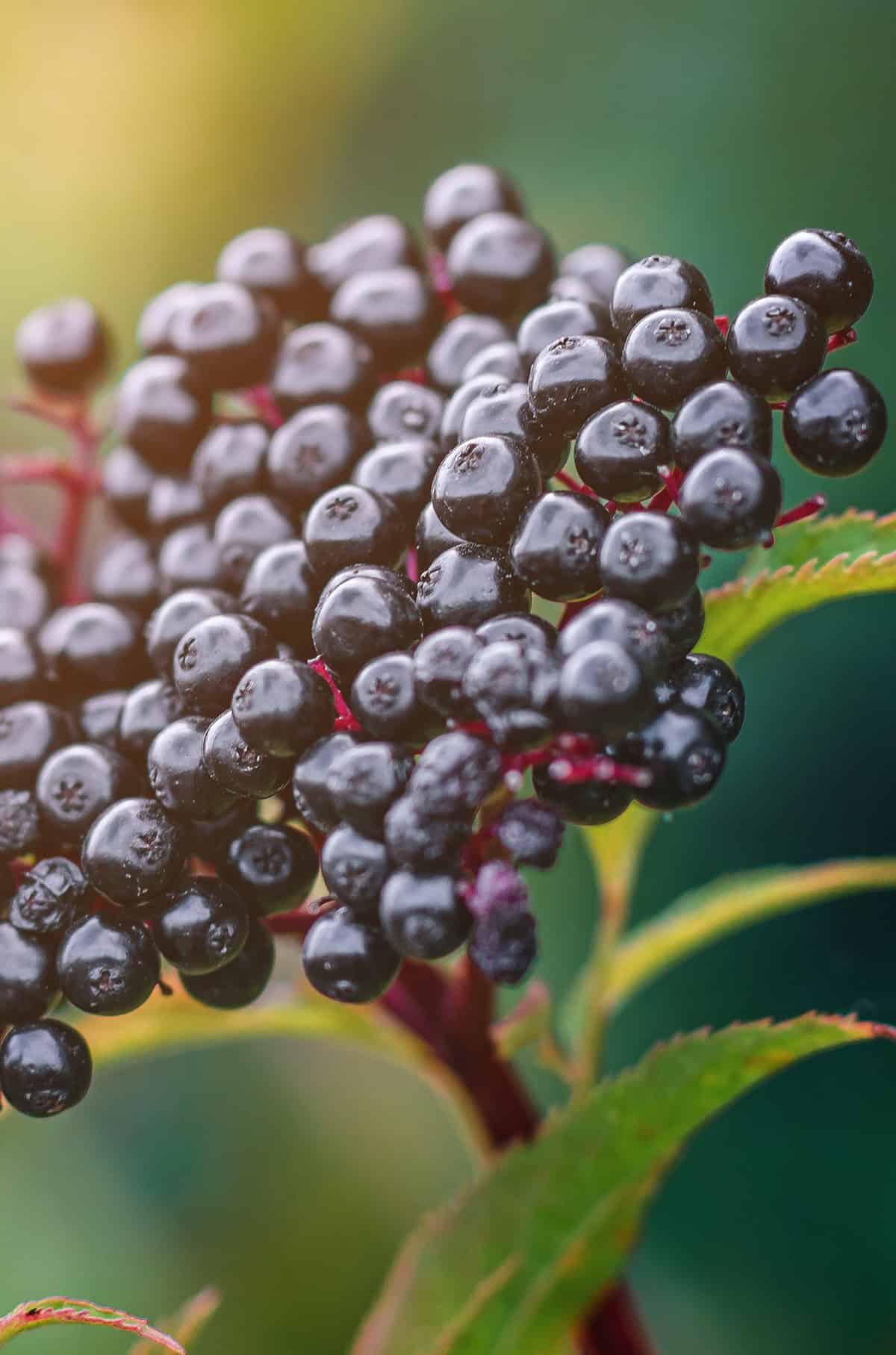
‘Samdal’ is a Danish variety of European elderberry that’s starting to catch on in North America. It can reach 8 to 10 feet and is all about productivity—huge clusters make picking quick. Berries are deep purple, high in antioxidants, and ripen late.
Pollination is a little different—pair it with another European elderberry like ‘Samyl’ for fruit set. Thrives in moist, fertile soil and loves full sun.
European Elderberry Varieties
Sambucus nigra, or European elderberries, grow fast and offer both fruit and ornamental value. Some are grown just for their striking foliage, others for their flavorful berries.
Black Lace
Black Lace is a showstopper. The finely cut, dark purple leaves look a bit like a Japanese maple. Early summer brings pale pink flower clusters—fragrant, too—that turn into deep purple-black berries.
If you want color contrast, this one delivers. It handles different soils and cold winters, growing 6 to 8 feet tall. Works as an edible or decorative shrub. Just remember: berries need cooking before eating.
Black Beauty
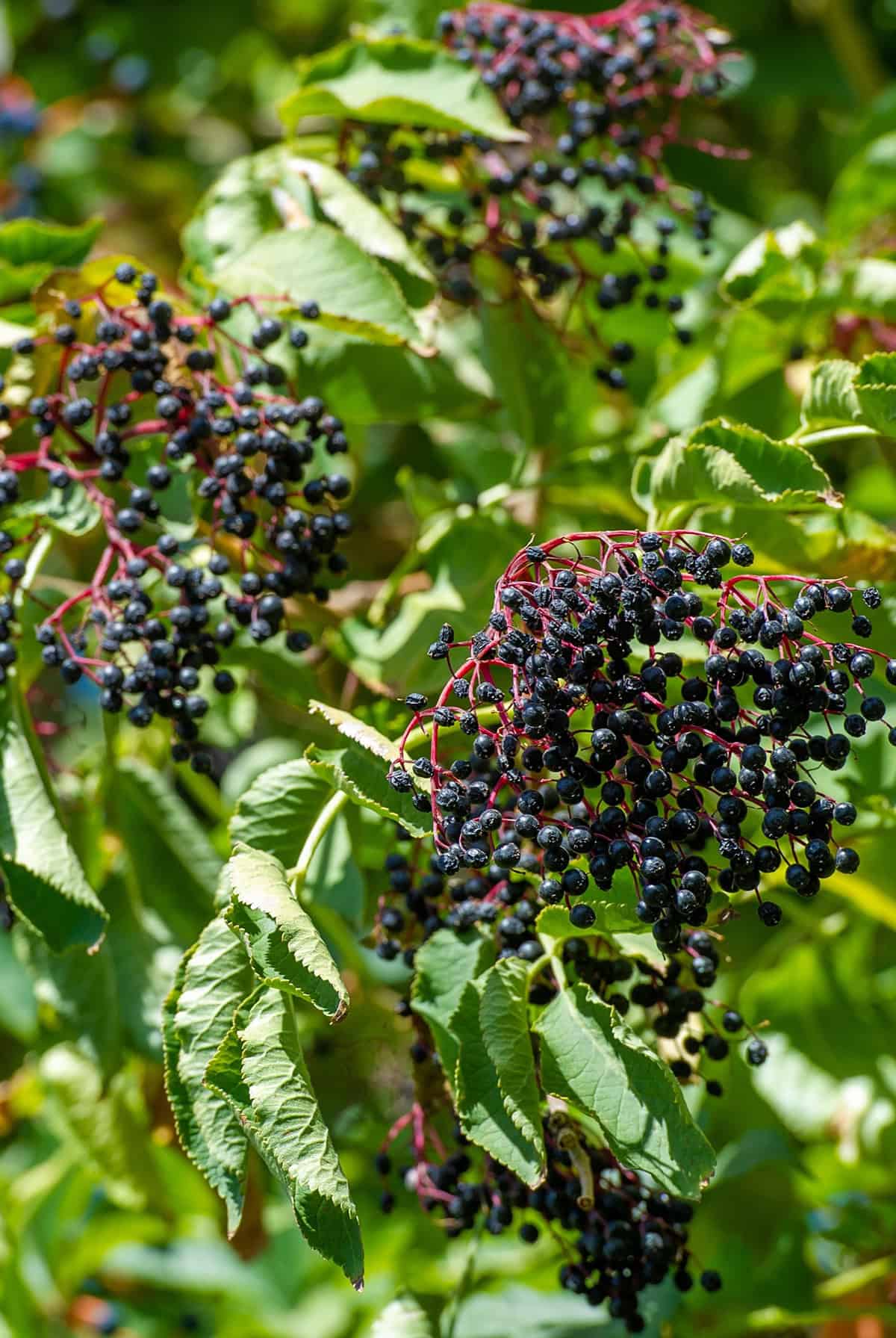
With Black Beauty, you get dark foliage and a compact form. The broad, deep burgundy leaves set off big pink or white flowers that pollinators love. Berries show up late summer, glossy and black.
It works as a small tree or shrub, reaching 8 to 10 feet. Fits right into landscape beds or as a screen. The berries are good for syrups and preserves, and the leaf color is a real draw.
Haschberg
If you’re after a heavy producer, Haschberg is a strong candidate. It’s Austrian, upright, with thick stems and regular branching.
You’ll get big clusters of dark purple berries by mid to late summer. The fruit is juicy—great for wine or juice. Haschberg is self-fertile but does even better with another variety nearby. It’s cold-hardy and shrugs off most common diseases.
Sampo
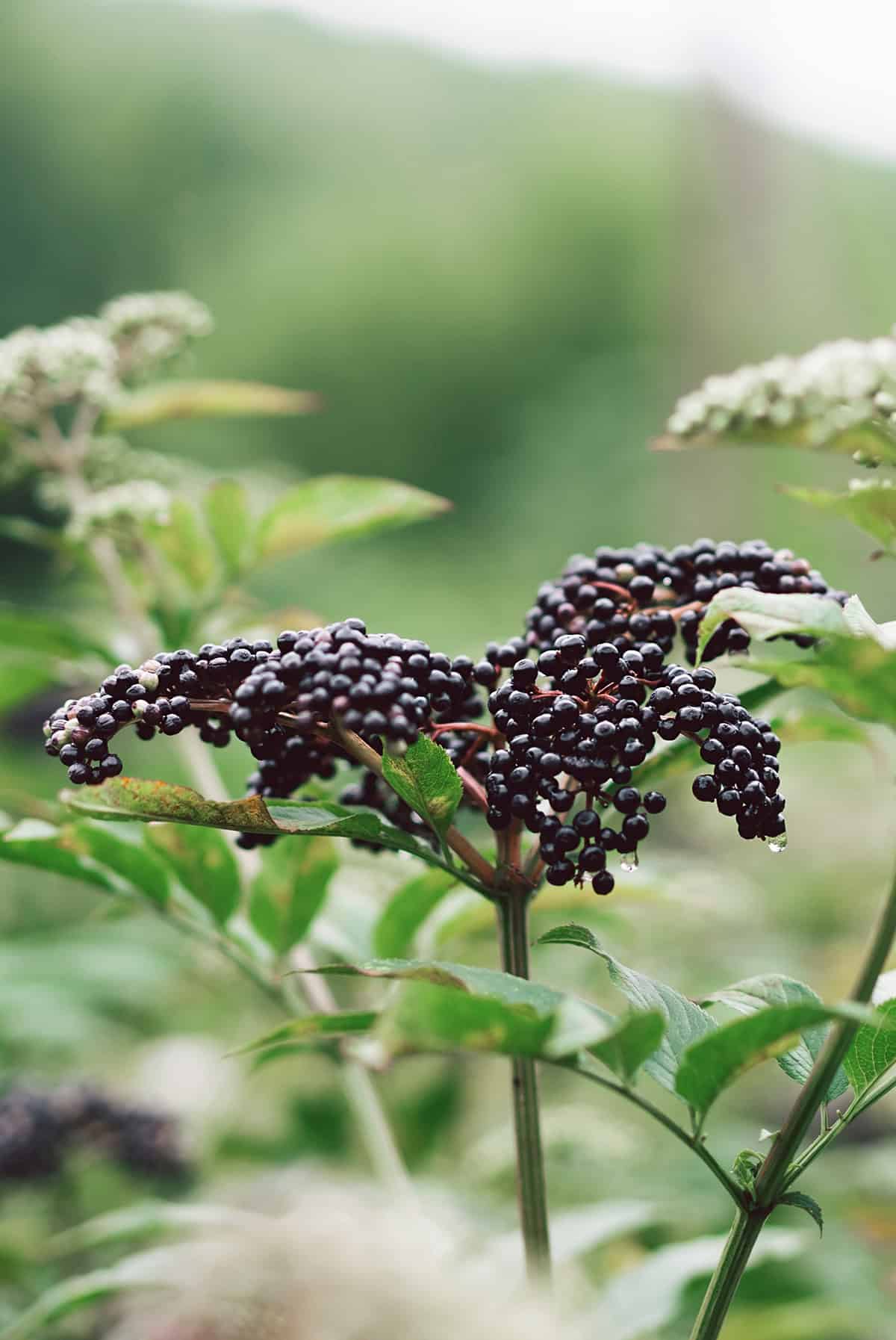
Sampo stands out for uniform growth and reliable fruiting. Bred in Denmark, it puts out large panicles of creamy-white flowers in spring, then dark, flavorful berries.
This one’s popular in both home and small commercial plantings. It’s disease-resistant and handles northern climates, growing 6 to 8 feet. Needs another elderberry for pollination. The berries are sweet and colorful—great for juice or desserts.
Samyl
Samyl is all about heavy crops of large, flavorful berries. It’s a Danish cultivar with vigorous growth and big flower heads. The bush is mid-sized and works well in mixed plantings or as a hedge.
Harvest is consistent in cool-summer zones. Berries ripen almost all at once in late summer, making picking easy. Needs cross-pollination from another Sambucus nigra. Fruit is common in commercial syrups and food coloring.
Marge
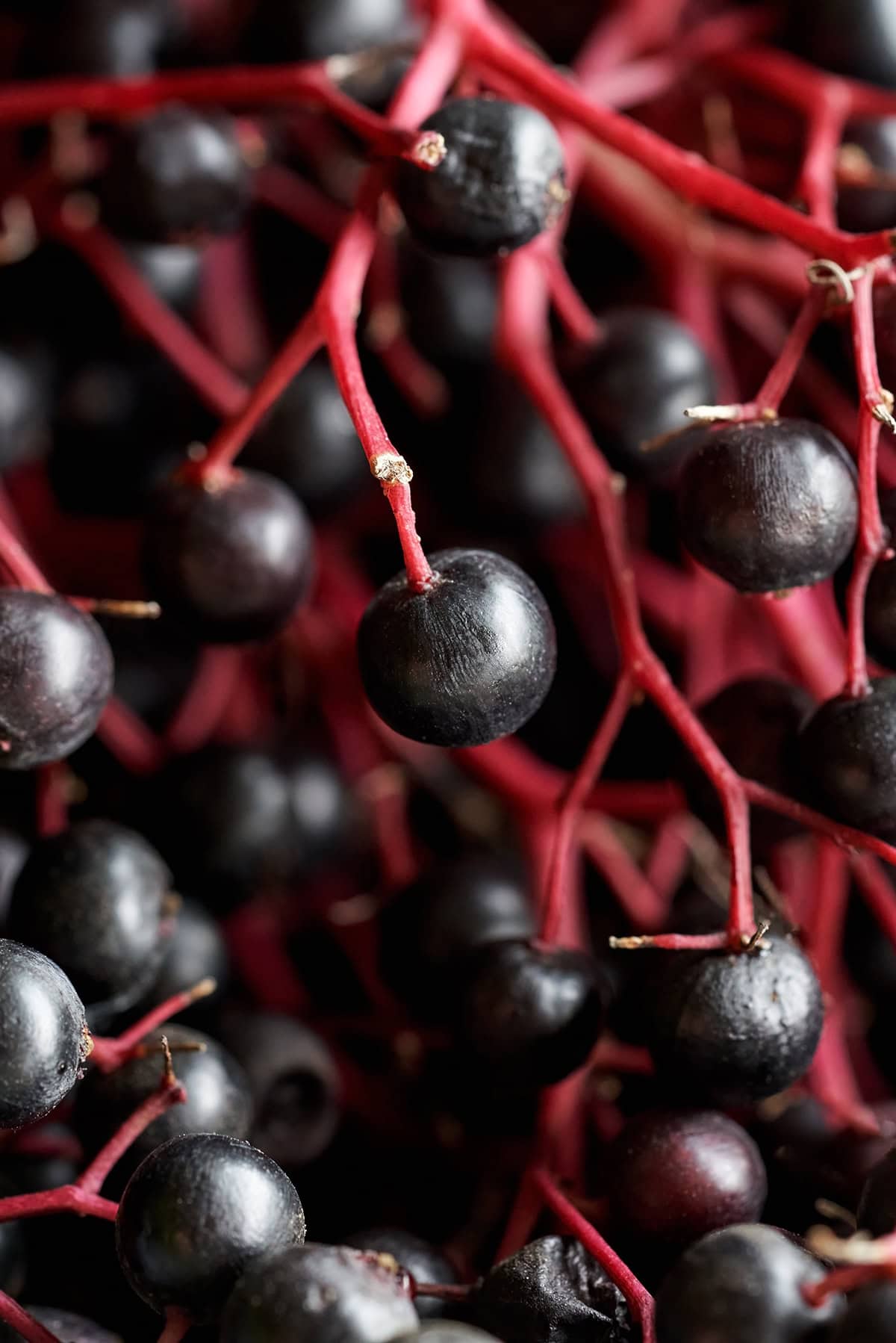
Marge elderberry is an interesting hybrid, blending American and European types. It’s got the disease resistance and heat tolerance you’d expect from American elderberries, but the berries themselves are impressively large, more like the European selections. The plant can easily reach 12 feet and tends to sprawl a bit.
This one’s pretty productive in a lot of climates, especially where summers get hot—something most European varieties struggle with. The berries, which ripen around midsummer, are big and make really good juice. Marge is self-fertile, so you can skip the hassle of finding a second plant for pollination. For folks in the southern and central U.S., it’s a favorite thanks to its adaptability and solid fruit yields.
